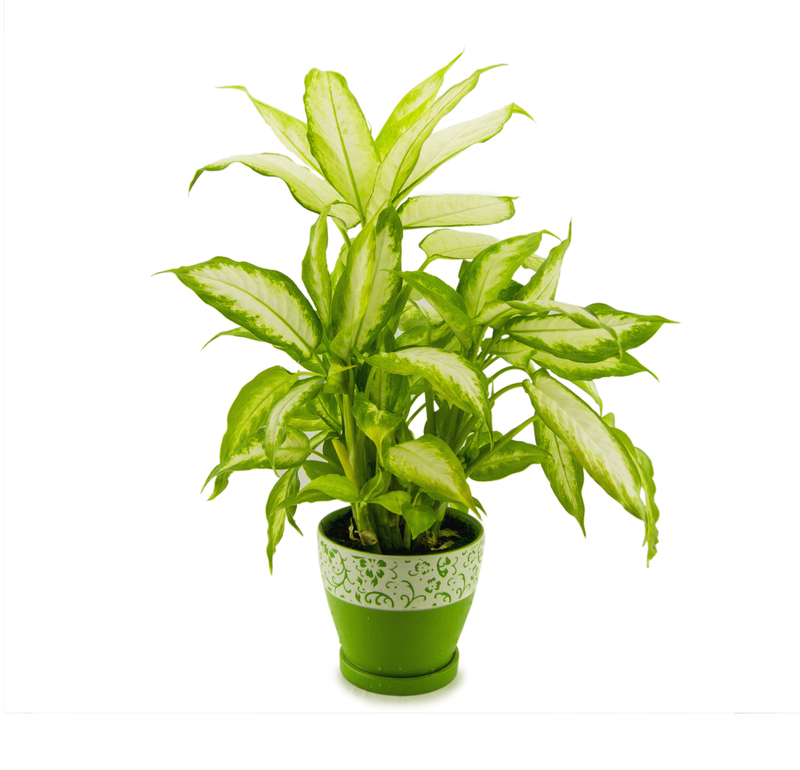Optimizing Your Garden Layout for Wind Control
Posted on 22/09/2025
Optimizing Your Garden Layout for Wind Control
Wind can be both a friend and a foe in the garden. A gentle breeze helps with pollination and keeps pests at bay, but strong gusts can damage plants, dry out soil, and make enjoying your outdoor area difficult. Optimizing your garden layout for wind control is crucial, especially in regions prone to harsh weather. In this guide, we will explore how to design and structure a garden that not only resists wind but also harnesses its benefits, ensuring your outdoor space thrives year-round.
Understanding the Impact of Wind in Gardens
Wind affects gardens in various ways, from influencing plant growth to altering soil moisture levels. Recognizing the wind conditions specific to your area is the first step in optimizing your garden design for wind control.
Negative Effects of Wind on Gardens
- Physical Damage: High winds can break stems, uproot plants, and snap branches.
- Soil Erosion: Strong gusts remove topsoil, which is vital for plant health.
- Drying Effect: Wind accelerates evaporation, leading to water stress and increasing irrigation needs.
- Reduced Pollination: Excessive wind can disturb pollinators and hinder fruit set.
Positive Effects of Wind in the Garden
- Improved Air Circulation: Reduces humidity and lowers risk of fungal diseases.
- Natural Cooling: Helps cool plants and create a pleasant environment during the summer.
- Pest Control: Discourages some pests from settling on your garden plants.

Principles of Garden Wind Control
To successfully control wind in the garden, it's essential to assess your site's exposure, the prevailing wind direction, and the needs of your plants. The principles below are foundational for optimizing garden layout against wind effects.
1. Assess Prevailing Wind Direction and Strength
Observe your site throughout the year. Use ribbons or wind vanes to determine the main wind directions and intensity. Local weather data can also inform your planning.
2. Identify and Protect Vulnerable Areas
Some garden spots--like patios, vegetable beds, or children's play areas--need more protection than others. Map these out before creating wind barriers.
3. Create Effective Windbreaks
- Hedges: Dense, living windbreaks that also add visual appeal and habitat for wildlife.
- Fences: Semi-permeable fences (e.g., slatted, lattice) allow some wind through, reducing turbulence.
- Trees and Shrubs: Strategically placed, these larger plants can diffuse and redirect wind above and around the garden.
Design Strategies for Optimizing Your Garden Layout for Wind Control
A carefully planned layout can minimize wind damage, encourage healthy plant growth, and even make your garden more aesthetically pleasing. Here's how to optimize your garden design for wind protection:
Layered Wind Defense: Combining Barriers
Layering different types of windbreaks provides better protection than a single barrier. For example:
- Outer Layer: Tall trees or evergreens form the first line of defense.
- Middle Layer: Shrubs act as a secondary buffer, capturing wind that passes through the first layer.
- Inner Layer: Low hedges and perennial beds reduce wind speed before it reaches sensitive areas.
Using Hardscape Elements for Wind Control
Structural elements like walls, trellises, and arbors can be integrated into your garden layout for additional wind blocking. When planning placement:
- Install walls or fences at right angles to the prevailing wind for maximum effect.
- Opt for semi-permeable materials to prevent wind turbulence and swirling behind solid barriers.
- Use trellises adorned with climbing plants for a living barrier that's both beautiful and functional.
Optimizing Plant Placement According to Wind Exposure
- Place Wind-tolerant Plants on the Windward Side: Hardy species will take the brunt of the wind, sheltering more sensitive plants behind them.
- Zone Vulnerable Plants Closer to Structures: Delicate vegetables and ornamentals should be grown near the house or sturdy barriers for natural wind protection.
- Group Plants: Plant in clusters rather than single lines. Grouping helps them shield one another from wind stress.
Choosing the Best Plants for Wind Control
Selecting the right plants is fundamental to optimizing your wind-resistant garden layout. Here are some plant characteristics and top choices for garden windbreaks:
Ideal Characteristics of Windbreak Plants
- Flexible Stems: Plants that bend, rather than break, in strong winds.
- Dense Foliage: Shrubs and trees with plenty of leaves trap wind and reduce its speed.
- Deep Roots: Plants anchored securely in the soil are less likely to topple.
- Evergreen Habit: Year-round protection is best from evergreen species.
Top Trees and Shrubs for Windbreaks
- Pines (Pinus spp.): Tall, dense, and evergreen--excellent as primary windbreaks.
- Holly (Ilex aquifolium): Thorny foliage and thick growth deter wind and intruders.
- Privet (Ligustrum spp.): Fast-growing hedges that form dense barriers quickly.
- Elaeagnus (Elaeagnus ebbingei): Hardy and salt-tolerant, perfect for coastal gardens.
- Blackthorn (Prunus spinosa): Tough native hedge plant, withstands strong gales.
- Red-twig Dogwood (Cornus sericea): Colorful in winter with dense branching.
Other Useful Plants for Soften Wind and Prevent Erosion
- Dwarf bamboo
- Grasses such as Miscanthus or Switchgrass
- Hardy perennials like Russian Sage, Yarrow, and Catmint
Wind Control Techniques for Vegetable and Flower Gardens
Vegetable gardens and flower beds can be particularly sensitive to wind exposure. To perfect your layout for wind resistance and stronger yields:
Raised Beds with Protective Edges
Build raised beds with sturdy sides (wood, stone, or recycled plastic) that stand a few inches above soil level. This helps to block low-level winds, retain warmth, and reduce evaporation.
Use Row Covers and Shade Netting
Lightweight covers over your crops act as temporary windbreaks, shielding young or fragile plants.
- Secure with pegs or stones to prevent wind from lifting the covers.
- Remove or adjust during pollination or especially hot weather.
Strategic Row Orientation
Rows planted perpendicular to the prevailing wind are more resistant to damage than those running in the same direction as the wind. This approach reduces "wind alley" effects that funnel and intensify wind.
Companion Planting for Wind Protection
Mix taller crops with shorter, wind-sensitive ones. Sunflowers, corn, or Jerusalem artichokes can shield lettuces, beans, or herbs planted in their "lee" (the sheltered side).
Tips for Wind Control in Small Urban Gardens
Even on balconies or urban patios, optimizing layout for wind shelter is essential. Try these methods:
- Use Container Arrangements: Block wind pathways by grouping pots and planters strategically. Place the tallest ones facing the wind.
- Install Screen Panels: Decorative screens or stretch trellises make attractive, compact windbreaks.
- Grow Vines: Quick-growing climbers like clematis, honeysuckle, or ivy on rails and fences provide a natural shield.
- Invest in Modular Furniture: Benches and storage cubes can double as small-scale wind barriers.
Irrigation, Mulching, and Soil Considerations Under Windy Conditions
With wind comes increased evaporation and, consequently, drier soil. To maintain moisture and ensure plant health in an optimized wind-protected garden:
Mulching
- Apply a thick mulch layer (e.g., wood chips, bark, shredded leaves) to prevent water loss.
- Stone or gravel mulches in ornamental beds can stabilize soil in exposed locations.
Drip and Soaker Hose Irrigation
These systems minimize evaporation, ensuring efficient watering directly at plant roots. Position them under mulch for extra protection.
Soil Improvement
Amend soils with compost and organic matter to enhance water retention and resilience against wind-driven erosion.

Ongoing Maintenance and Monitoring
Wind patterns can shift with new construction, maturing trees, or different seasons. Revisit your wind control measures yearly to ensure continued effectiveness.
- Prune or thin windbreaks if they become too dense, which can cause turbulence.
- Replace any wind-damaged barrier plants promptly.
- Adjust movable screens and containers with the changing wind flows.
Conclusion: The Benefits of an Optimized Garden Layout for Wind Protection
Optimizing your garden for wind control protects your plants, conserves water, and makes your outdoor spaces more enjoyable and productive. Wind-smart garden design blends practical barriers like hedges and screens with beautiful, diverse plantings, creating a landscape that's both resilient and inviting. Whether you're sheltering a spacious yard or a cozy balcony, the strategies covered here will help you cultivate a garden that flourishes--no matter the wind's strength.
Frequently Asked Questions on Optimizing Garden Layout for Wind Control
- Can I use fruit trees as windbreaks?
Yes, sturdy fruit trees can serve as part of a layered windbreak, but avoid varieties prone to wind damage or breakage. - Do solid fences work better than hedges?
Not always. Solid barriers can cause wind turbulence, while hedges and permeable screens are better at slowing and diffusing wind. - How far from my house should I plant windbreaks?
Plant windbreaks at least 10-15 feet from buildings to allow air movement, root growth, and access for maintenance. - What should I do in very exposed coastal gardens?
Use salt-tolerant, robust species, and multiple layers of windbreaks. Regularly maintain soil fertility and mulch heavily to retain moisture.
By taking a thoughtful, proactive approach, you can transform a wind-swept plot into a thriving, sheltered paradise. Start planning your wind-optimized garden layout today and enjoy lasting beauty and robust plant health for years to come!

